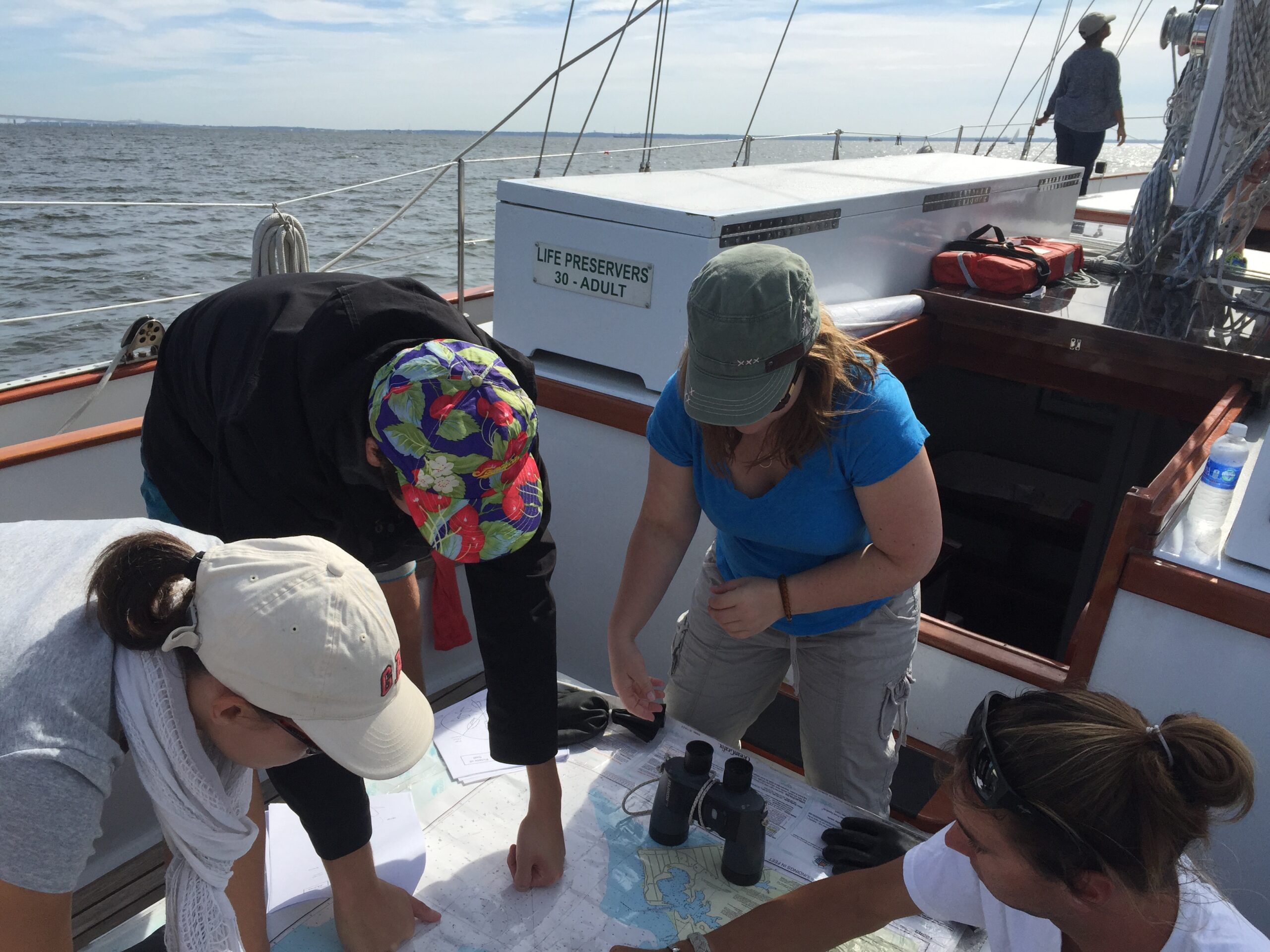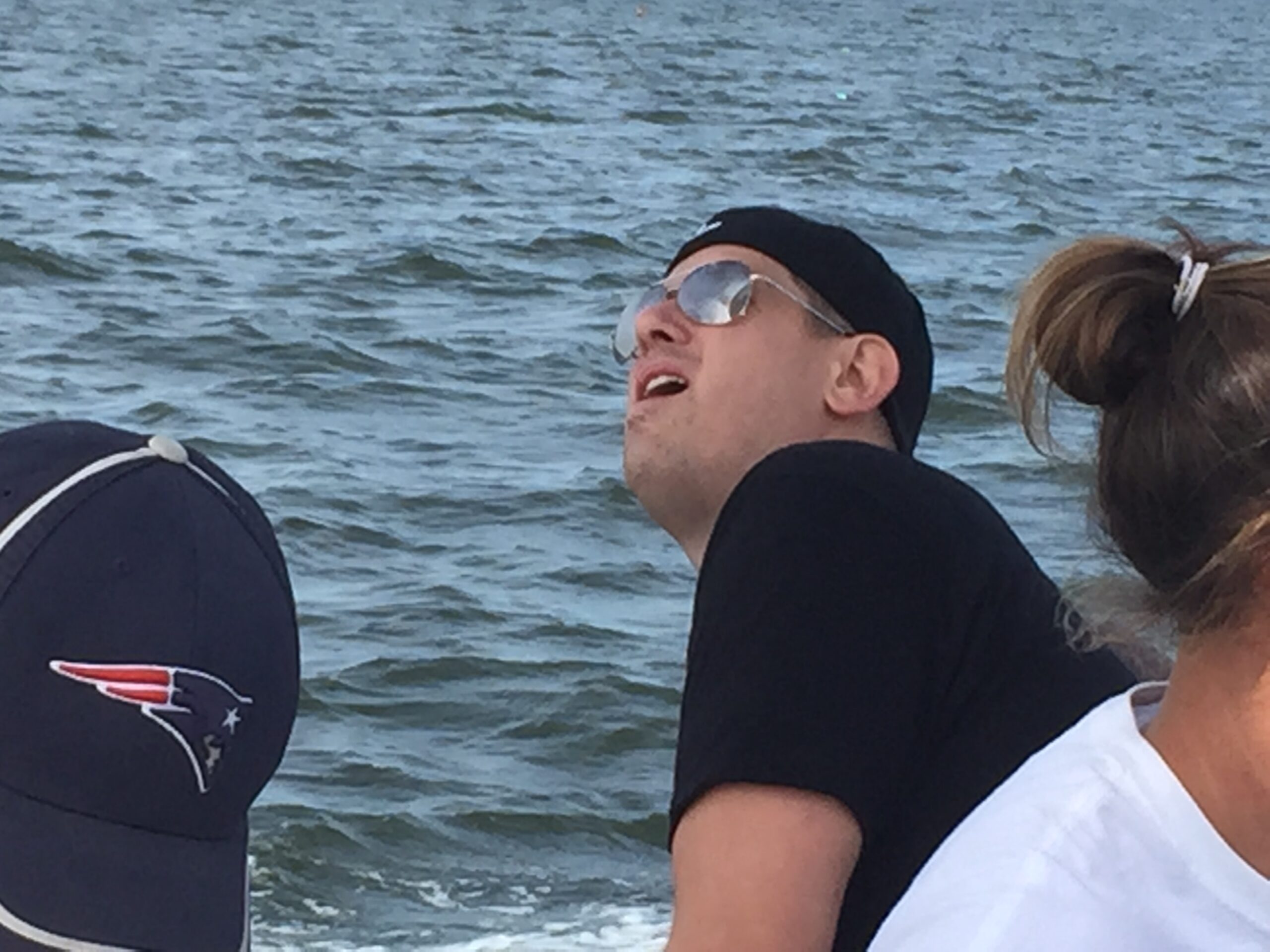For any business to thrive, it’s not enough to be in the boat together, doing your own thing. You need to be working in sync with goals aligned, clear communication, an unambiguous division of labor … and your ego checked at the door.

For some of us, it was the first time on a boat. For some of us, it was a team-building exercise we’d undertaken a few years ago. For most, it was the first time being responsible for charting a course and navigating a four-sail boat through a course in the windy Chesapeake Bay.
To date, 2015 has been an incredible year of evolution for Altitude – new team members, new processes, more demanding clients and much higher expectations. Working together to sail the very same boat that Christopher Walken captained in Wedding Crashers was not just an exercise in fun.
In fact, most of Team Altitude took the challenge so seriously some got a bit stressed.
It was a day full of learning and lessons that will enable us to work more efficiently and effectively back at the shop. The lessons we learned in the Bay that day can apply to any business.
 1. Check Your Ego at the Door
1. Check Your Ego at the Door
Prior to launching Altitude back in 2004, I served in the employ of another entity that shall remain nameless. There, profit wasn’t a motive – ego and turf were everything. As a result, there were some pretty awful business decisions made. Ego gets in the way of the best interest of the company. As we like to say here at Altitude, there is no “I” in team except in the a-hole.
Once Team Altitude stepped on the Woodwind had ego gotten in the way, we surely would have run around in circles … or stalled completely.
Had there been different personalities on board (perhaps individuals from my previous aforementioned employer), ego would have been the driver of the day. But on a sailboat, that won’t work. Leading with ego would have led to dried up communication — and a stalled boat.
Business lesson: Check your ego at the door. Anytime a decision is being made, ask yourself, “Is this decision in the best interest of the company – or the individual making it? Does this decision reflect one of our core values – or does it serve to advance an individual?” If the answer is no, it is not the right decision – and when it comes to personalities, he or she is probably not the right person for your organization.
2. Over-communicate

At first, when the reins of the Woodwind were handed over to the various teams, it was a bit chaotic as a slight change in the wind would cause the jib sail team, in isolation, to adjust their sail. Which would cause the steering team to adjust. Which threw the main sail team for a loop. And before you knew it, Jen and her crew were running all over the boat adjusting here, correcting there, re-emphasizing some basic pointers there.
Not to pick on the jib team, but I will. They were so focused on getting their part right, they didn’t pull their eyes from the tell tales long enough to see what was going on elsewhere on the boat, yet alone to let others know what was going on in their section of the boat. In their mind, and in their specific part of the process, they were doing their job like Captain Jen told them to – trimming the sail to adjust for the wind. Which would cause the steering team to adjust the wheel. The net result is we zigzagged – rarely the best way to get to the finish line.
Business lesson: Just because one group on a team knows something, doesn’t mean everyone who needs to know what’s going on does. Establish a process and protocol for frequent communication. Over communicate. It far outweighs the downside of being a bit annoying.
3. Pixel Pushing
Midway through the course, a slight shift in wind caused the boat to stall. It’s not that the wind stopped, but the sails were not perfectly trimmed. The various sail teams got better and better as the exercise went on – communicating with each other and the navigation teams. But the difference between moving along at 5 knots or 10 knots was a matter of ever-so-fine-tuning or trimming of the sail.

4. Beware the Obstacles
Out on the Bay, there were a ton of obstacles – buoys, boats, one large freakin’ bridge and … crab pots. Little bobbers in the water that always seemed to be right in our way but were so small the forward sail team often didn’t see them until the very last minute. Run them over and risk fines – or worse, the wrath of Captain Jen.
These little buggers wreaked havoc with our crew the first few times we encountered them.
“Go left, no right! No left!”
How can you move forward and stay the course if team member are running in circles?
Business lesson: Sometimes you need to navigate around immovable objects.
More often than not, this comes in the form of team members who aren’t team players or make decisions based on ego and turf rather than what’s in the best interest of the company. They can wreak havoc on your operation, team morale and cause you to lose site of the ultimate goal.
Have an unapologetic “Check your ego at the door” policy. And when or if that a-hole in “Team” starts to rear its ugly head, call the person on it. Ask the person who is acting or making a questionable decision if what they’re doing is in the best interest of the company. Then have the conviction to tell them about their bad behavior … and the chutzpah to ask them to move on if their behaviors aren’t corrected.
 5. Know Your SOPs
5. Know Your SOPs
To the untrained, a sail is a sail is a sail – but, as we learned, there’s difference in reading the tell tales of the staysail and the jib.
So midway through the challenge, when a team member switched stations, she had no idea that the tell tales of the staysail were different than that of the jib sail. So she was giving instructions to trim the sail in – when in fact, it was fine. In short, she didn’t realize there was a different set of rules for this task.
When she realized it, we righted course and were all sailing in the same direction.
Business lessons: When a new member joins the team, make sure going over the SOP is part of the on boarding. Also, set an SOP for the timely review of SOPs because it can be real easy to make an SOP – and even easier to forget it.
6. Enable Leaders to Emerge

When Jen and her crew were comfortable that things were working well, they congregated near the middle of the boat, sipped Diet Cokes and relaxed. It was during these moments it was wonderful to see who was taking command.
Business lessons: Removed from day-to-day comfort zones and thrust into a totally new situation, it was great to see leadership characteristics bubbling to the surface. Stretch comfort zones of your team members, ask them to do something new and different and see who rises to the challenge.
This is a tell tale sign of who is ripe for promotion, a new role and contributing to the company in ways you may not otherwise realize.
See more photos of our retreat and Chesapeake Bay adventure on Facebook.

 1. Check Your Ego at the Door
1. Check Your Ego at the Door 5. Know Your SOPs
5. Know Your SOPs

